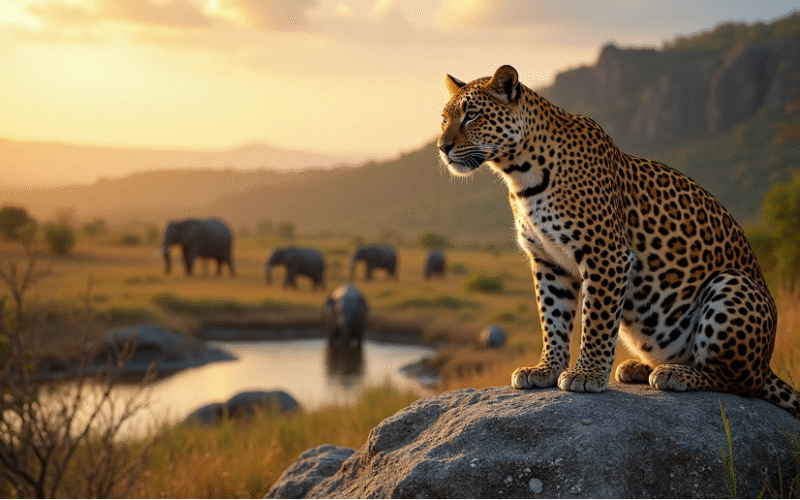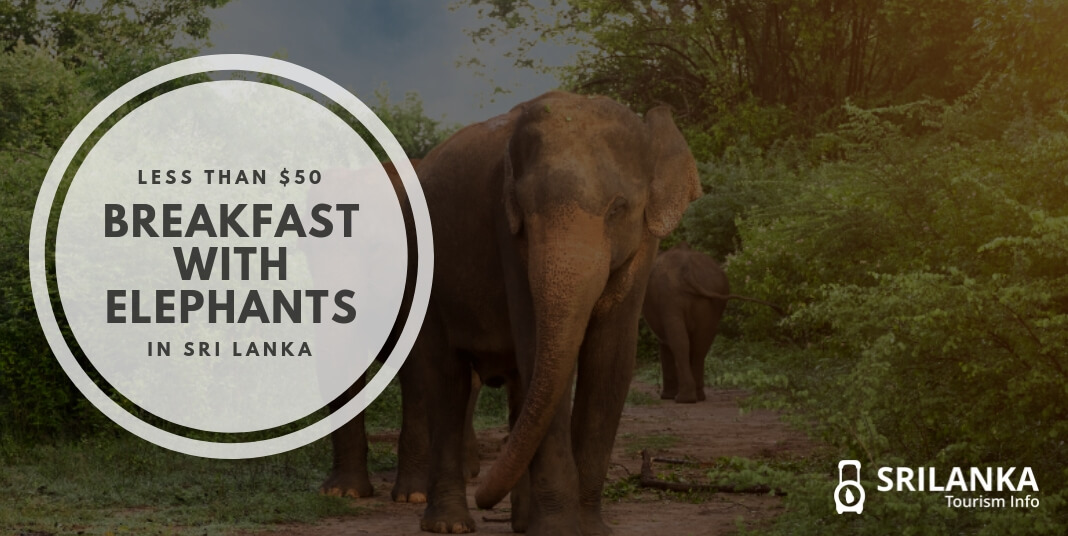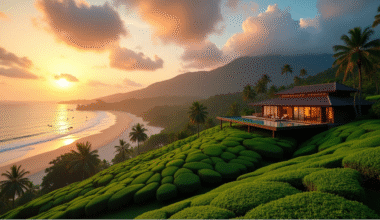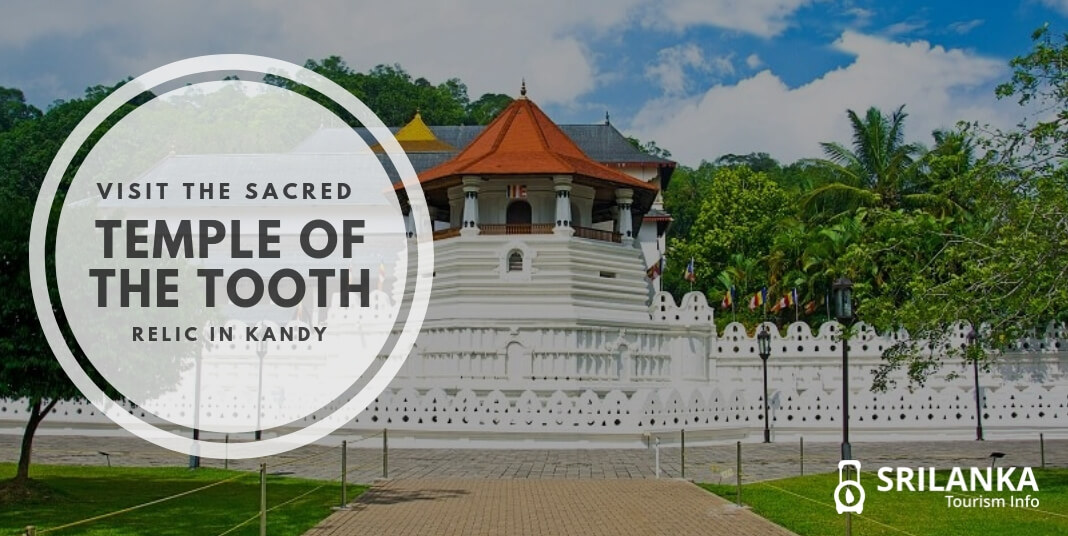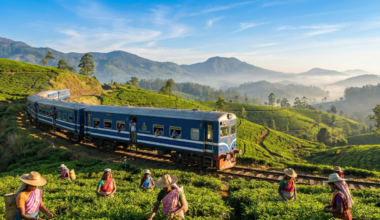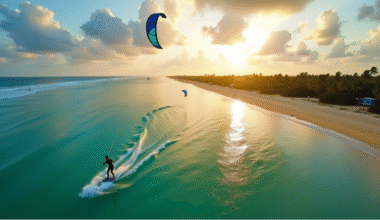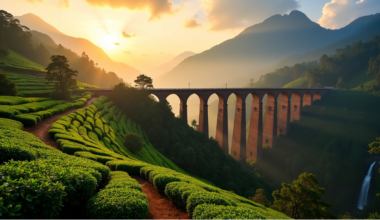The wilderness of Yala National Park stretches across an area 26 times bigger than Colombo city. What an amazing safari destination!
Yala stands as Sri Lanka’s most popular national park that draws record visitor numbers yearly, and with good reason too. Leopards move stealthily through the undergrowth while elephants wander at will. The park’s skies burst with color and song from more than 200 bird species. This massive sanctuary spans 979 square kilometers (378 square miles) in Sri Lanka’s southeastern region. The park’s layout splits into six distinct blocks, and each one shows you a different view of Yala’s interior.
Your visit needs careful planning to make the most of it. The best time to explore falls between February and June. During these dry months, sparse foliage and low water levels make wildlife easier to spot. You’ll find leopards gathering near waterholes more often.
This piece combines my local knowledge to help you create an unforgettable Yala safari experience. We’ll walk through everything from getting there and where to stay to prime wildlife viewing times and what to pack. Let’s help you start what could be Sri Lanka’s finest safari adventure.
How to Get to Yala National Park
Getting to Yala National Park needs some planning since this wilderness sanctuary sits in Sri Lanka’s southeastern corner. After helping many visitors find their way to this magnificent park, I know how vital it is to understand your transportation options before starting your Yala National Park safari.
From Colombo, Ella, and Nuwara Eliya
The road from Colombo stretches approximately 243km. You’ll spend 5-6 hours on the Southern Expressway. This route takes you through Bandaragama, Horana, Ratnapura, until you reach Tissamaharama (locals call it Tissa), the gateway town to Yala.
Ella gives you a better deal—the road spans about 100-110km and takes just 2-2.5 hours. This makes Ella a perfect stop before your Yala adventure when you’re exploring the country.
From Nuwara Eliya, you’ll cover around 245km. The path leads through Pilimathalawa, Gampola, Walimada, Bandarawela, and finally to Tissamaharama. You can also catch a direct bus from Kataragama (near Yala) to Nuwara Eliya. These buses run daily but take about 7 hours. Drivers can make it from Yala to Nuwara Eliya in about 2.5 hours, covering 146km.
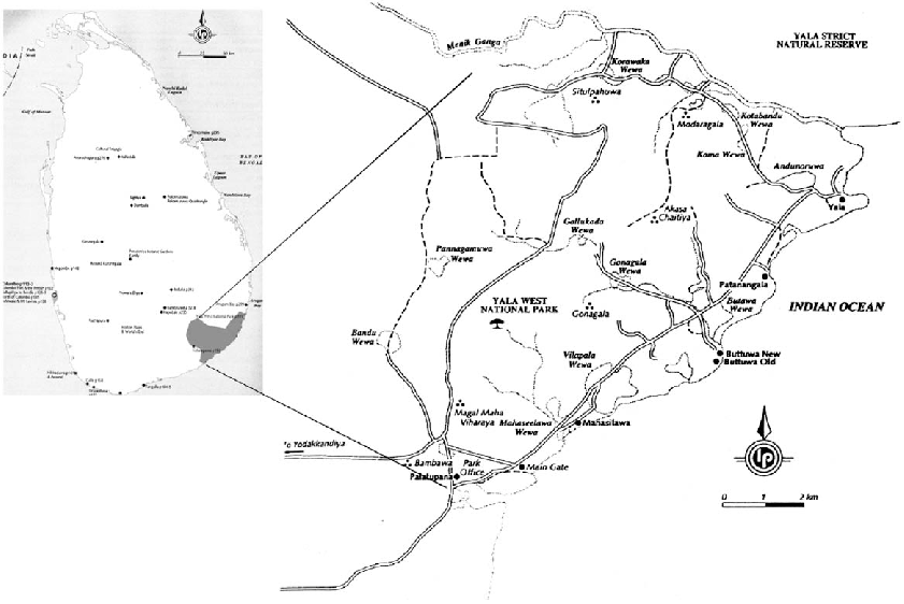
Image Source: ResearchGate
Public transport vs private car
Private Car/Taxi:
- Your most comfortable and flexible choice
- Takes you right to your accommodation
- Travel time from Colombo: 4-5 hours
- Cost from Ella: Around $50 USD
- Cost from coastal towns: Minimum $50 USD
Public Bus:
- Budget-friendly but less comfortable
- Colombo to Kataragama: 8 hours, costs between LKR 100-230 ($0.5-1.15)
- Coastal towns: Bus #32 (Kataragama) from Mirissa/coastal towns to Tissamaharama, 3.45-5 hours at $1-4
- You’ll need a tuk-tuk from Tissamaharama or Kataragama to reach the park
Train:
- A scenic option with limited routes
- Colombo to Haputale: Trains leave at 9:45 AM and 8:00 PM daily, tickets cost LKR 95-320 for 1st-3rd class seats
- Haputale: Add 1.5 hours by road to reach Yala
- The nearest train stations sit in Beliatta (south coast) or near Ella
Air Travel:
- Quick but pricey
- Cinnamon Air flies from Colombo to Tissa and Weerawila (less than an hour from the park)
- Resorts with helipads offer private helicopter services
Tips for booking transfers
- Book accommodations strategically – Stay in Tissamaharama or Kataragama. These main towns near Yala give you more transportation choices.
- Ask your accommodation for help – Local hotels know reliable drivers and can get you better rates than you might find on your own.
- Combine with other destinations – Southern beaches lie just 1-2 hours from Yala. Add Yala to your south coast plans.
- Pre-arrange transport – Book your rides at least a day ahead, especially during peak season.
- Think about a tour package – Day tours from Ella or coastal towns come with transportation but start very early (before 3 AM).
- Skip the Pick Me app – Local drivers often want more than the app shows. Book through your hotel or use Uber for longer rides.
- Check luggage space – Public busses have little storage. This makes things tough if you carry big bags.
Yala National Park’s remote location adds to your Sri Lankan adventure. Public transport gives you an authentic local feel at a lower cost, while private vehicles offer comfort and speed. The smart move is to fit your Yala visit into a bigger plan that includes the south coast or hill country.
When to Visit Yala for the Best Safari Experience
Perfect timing makes all the difference in your Yala National Park safari experience. My years of guiding hundreds of visitors through this wilderness have taught me how seasons substantially change your wildlife viewing chances.
Dry season vs monsoon season
Wildlife in Yala follows two distinct seasonal patterns. The dry season (February to July) changes the landscape to create perfect safari conditions. Animals gather around the few remaining waterholes as water becomes scarce. You’ll spot animals more easily because the vegetation thins out.
The northeast monsoon (mid-October to late December) drenches the park with heavy rainfall. The resulting lush vegetation looks stunning but makes wildlife harder to spot. Some roads become impossible to use, which limits access to certain areas.
The park shuts down in September for maintenance and opens its gates again around mid-October. This break lets the ecosystem recover after the busy tourist season.
Best months for leopard sightings
Your chances of seeing Yala’s famous leopards depend on good timing. February to July gives you the best shot at spotting these magnificent cats. The period from May through August is exceptional because the dry conditions force leopards to visit the remaining water sources.

My experience shows that leopards are most active under these conditions:
- They’re easier to spot at dawn and dusk
- They move around more during new moon phases
- You’ll see them more often when the park is quiet
May and June stand out as special months. These combine dry weather with fewer tourists, which creates perfect conditions to watch undisturbed wildlife. July and August still offer great wildlife viewing, though European summer tourists make the park much busier.
Birdwatching and seasonal highlights
The park becomes a bird lover’s dream from November to April. Migratory birds escape the harsh Siberian and western European winters during this time. You’ll find about 215 bird species here, and six of these are unique to Sri Lanka. Look out for the Indian pitta, blue-tailed bee-eater, and brown shrike.
Each season brings its own wildlife treats:
- January-February: Cool morning safaris (18-23°C) offer frequent herbivore sightings
- March-April: Elephant herds are everywhere, with males in musth looking for mates
- May-June: Sloth bears come out to feast on Palu tree fruit (Manilkara Hexandrian)
- July-August: Your best chance to see sloth bears eating fallen Palu fruit
The park gets packed during December-March and the Sinhalese New Year (April 14th), which can make wildlife harder to spot. A quieter time means a more personal safari experience.
Photographers will notice the park’s dramatic seasonal changes. May-June shows Yala at its finest—green from recent rains yet dry enough to bring animals to waterholes. This time also brings more baby animals, from tiny deer fawns to playful leopard cubs.
Whatever time you pick, knowing these seasonal patterns helps set the right expectations. This knowledge will help you get the most from your Yala National Park safari adventure.
Choosing the Right Safari Type
Your safari experience at Yala National Park can be amazing or just average – it all depends on how you plan it. Let me share what I’ve learned from my years of guiding visitors through Yala’s incredible landscapes. The type of safari you choose will shape your entire wildlife viewing experience.
Morning vs afternoon vs full-day safaris
Morning safaris start early – between 5:00-5:30 AM to enter the park at 6:00 AM. The animals are most active in these cool morning hours. You’ll be one of the first vehicles in the park, which means undisturbed wildlife viewing. These drives wrap up around 9:30-10:00 AM, perfect timing for a late breakfast back at your hotel.
Afternoon safaris work better if you’re not a morning person. These trips run from about 1:30-2:30 PM until sunset at 6:00-6:30 PM. The cooling temperatures bring animals back into action, and you’ll have great chances to spot elephants, birds, and leopards in beautiful afternoon light.
Full-day safaris give you the complete experience – they’re perfect for serious wildlife lovers and photographers. Starting at dawn (5:00 AM) and lasting until sunset (6:00 PM), you can explore the park’s remote corners. The park requires all vehicles to take a break from 12:00-2:00 PM at specific rest areas.
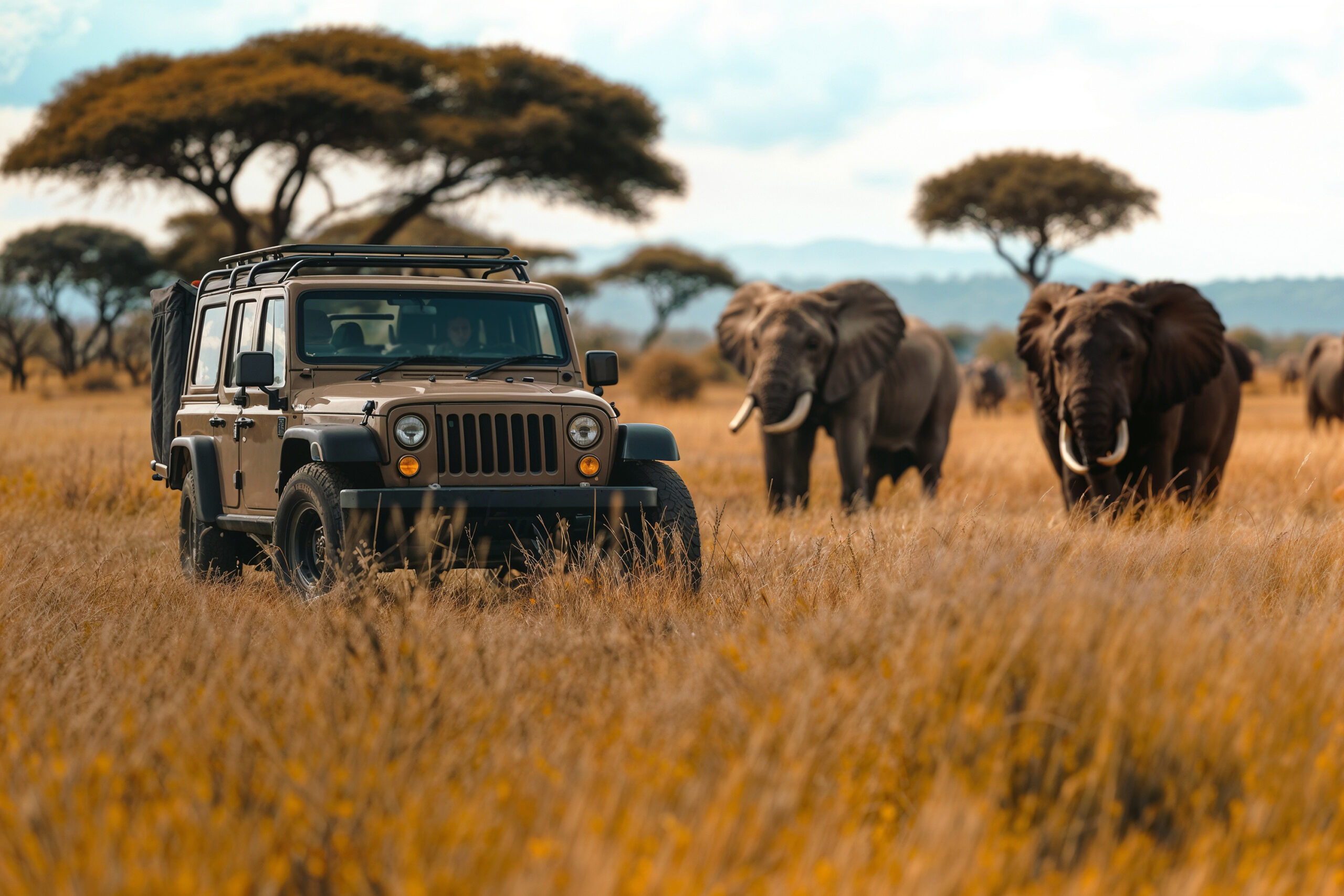
What to expect on each safari
Morning safaris let you experience the park waking up with bird songs filling the air. The soft light makes for great photos, and you might catch predators finishing their night hunts. This option works best if you’re serious about wildlife photography.
Afternoon safaris show you different animal behaviors. Many creatures gather near water sources as the day cools down. Photographers love the “golden hour” light that bathes the landscape in warm tones as the day ends.
Full-day safaris give you time to relax and wait for those special moments. You won’t need to rush between spots, and you can watch animals behave naturally. The longer duration means you can visit parts of the park that most people never see. Remember to pack enough water and sun protection. The midday break might test your patience, but the extra time means you’ll see much more wildlife.
Yala National Park safari price breakdown
Safari prices have two parts – jeep rental (with driver-guide) and park entrance fees. Here’s what you’ll pay:
Jeep Rental Prices (2025):
- Half-day safari (Block 1 Palatupana): LKR 16,900
- Full-day safari (Block 1 Palatupana): LKR 28,100
- Half-day safari (Blocks 4 & 5 Galge): LKR 19,800
- Full-day safari (Blocks 4 & 5 Galge): LKR 29,700
One jeep fits up to six people, and these rates include pickup from Tissamaharama hotels.
Park Entrance Fees:
- Foreign Adult: USD 25.00 (peak season) / USD 20.00 (off-peak)
- Foreign Child (6-12): USD 15.00 (peak season) / USD 10.00 (off-peak)
- SAARC Country Adult: USD 20.00 (peak season) / USD 15.00 (off-peak)
You’ll need to pay an extra 15% VAT plus service charges and taxes. These fees aren’t part of your jeep rental – you pay them at the park entrance.
Budget travelers can save money by sharing a jeep. If you prefer privacy and flexibility, private tours cost around USD 78.00 for half-day and USD 140.00 for full-day trips.
Here’s a money-saving tip: Book through your hotel instead of dealing with drivers in tourist areas. Just make sure you know what’s included – some tours provide meals and water, while others don’t.
Where to Stay Near Yala National Park
Your choice of accommodation can make a huge difference between a simple day trip and a deep wildlife experience at Yala National Park. My experience guiding visitors through different lodging options has shown me how your stay affects the entire safari adventure.
Luxury lodges and eco-resorts
Yala’s borders have some amazing eco-luxury options that blend comfort with wildlife experiences. Wild Coast Tented Lodge features 28 unique “cocoon” tents with four-poster beds and colonial-style expedition furnishings between the jungle and ocean. The resort’s design resembles a leopard’s paw print. Solar power provides 40% of its energy, and it uses a graywater irrigation system.
Uga Chena Huts has 14 private cabins spread over 9 acres of wilderness, each with its own plunge pool. The property sits between Yala National Park and the Indian Ocean, giving guests easy access to both environments. Their rangers guide guests on individual-specific safaris, and families can stay with up to two children.
Cinnamon Wild Yala gives you a more affordable luxury option at $300-400 per night. You’ll find chalets with private balconies, a pool, and a rooftop terrace.
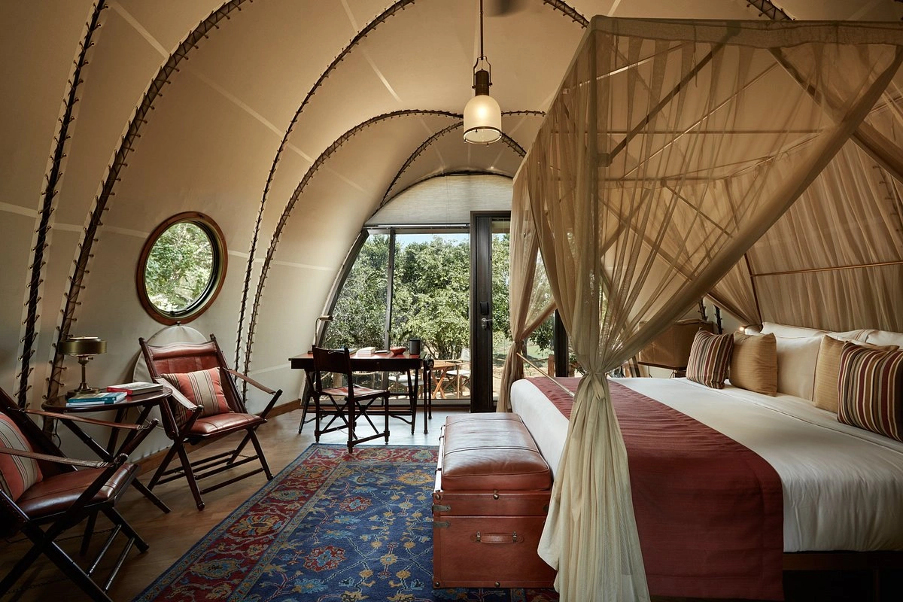
Image Source: Tripadvisor
Mid-range and budget options
Tissamaharama (Tissa) serves as the central spot for cheaper stays. Art Yala Boutique Resort gives you lake views and stylish rooms from $72 per night. Wild Culture Yala has an outdoor swimming pool with rooms starting at $135.
Budget travelers will find many comfortable guesthouses at great prices. New Cormorant Lake Resort & Yala Safari Place has rooms starting at $14.40 per night. Yala Safari River View Hotel offers spacious, air-conditioned rooms at the same price.
Safari-focused amenities come with most accommodations. My Resort Yala stands out with free bikes, roomy accommodations, and safari tours from $25.50 per night.
Staying inside vs outside the park
Government bungalows inside Yala National Park give you an unmatched connection with nature. You can stay up to three nights but need to book through their official website. Some guests say these facilities don’t match private options in quality.
Most people choose to stay in the park’s buffer zone. Wild Trails Yala by Suri provides “glamping” tents that come with hardwood floors and air conditioning. You might spot wildlife during afternoon bush walks near your tent.
The park opens at 6 AM, so staying close to the entrance helps, especially for morning safaris. Tissamaharama, 45 minutes from the main gate, gives you the most accommodation choices at all price points. Previous guests suggest booking your stay early. Properties near Yala National Park have limited rooms that fill up fast during peak season.
What to Pack and Wear for Your Safari
Smart packing makes a huge difference in your Yala National Park safari experience. As someone who has guided countless safaris, I know the right preparation will lift your wildlife viewing adventure to new heights.
Clothing tips for comfort and safety
Your choice of neutral colors will help you blend into the environment. Choose khaki, beige, olive green, or brown tones. Bright colors, white, black, or camouflage patterns are off-limits, with the latter being illegal in some African countries. Yala’s dusty conditions call for lightweight, breathable fabrics that shield you from sun and insects.
Layered clothing lets you adjust to temperature changes throughout the day. Long-sleeved shirts with roll-up tabs work great and protect your arms from sunburn and bug bites. Lightweight pants or zip-off trousers work better than shorts to keep mosquitoes away.
You’ll find a surgical mask or bandana invaluable against Yala’s notorious red dust. Comfortable walking shoes or sandals suit the terrain well, and a wide-brimmed hat provides crucial sun protection.
Essential gear: binoculars, camera, sunscreen
A good pair of binoculars will revolutionize your safari experience by helping you spot elusive wildlife like leopards resting in distant trees. A camera with a zoom lens (200-400mm range works best) captures those special moments. Note that extra batteries and memory cards are crucial since power outlets are hard to find during safaris.
The tropical climate demands serious sun protection. Pack high-SPF sunscreen, polarized sunglasses, and SPF lip balm.
Food, water, and first-aid essentials
A reusable water bottle is essential for those long game drives. Energy bars, nuts, or dried fruits will keep you going between meals.
Your first-aid kit needs personal medications, motion sickness remedies, wet wipes, hand sanitizer, and tissues. Insect repellent with DEET is crucial—mosquitoes come out in force during dawn and dusk.
Yala’s remote location means some items need special attention: bring extra prescription medications, contact lens solutions if needed, and a basic medical kit for unexpected situations.
Cultural and Natural Add-Ons to Your Safari
The lands around Yala National Park hide more than leopards and elephants. Sacred treasures and coastal gems complete your wildlife trip. My safari guests love exploring these cultural and natural wonders that showcase Sri Lanka’s rich heritage.
Sithulpawwa Rock Temple
The Sithulpawwa Rock Temple (Sithulpawwa Rajamaha Viharaya) sits on a rocky outcrop within Yala’s boundaries. King Kavantissa built this Buddhist monastery in the 2nd century BCE. This ancient site’s name comes from “Chiththala Pabbatha” which means “hill of the quiet mind.” The monastery housed 12,000 monks who dedicated their lives to Buddhist scholarship.
This 2,200-year-old monastery complex showcases stupas, rock inscriptions, and meditation caves. Stone stairs lead to the summit. Look for dirt stains on rock overhangs – they show where elephants squeezed under the rocks. The summit rewards climbers with stunning views of jungle and distant formations.
Kataragama sacred city
Kataragama lies just 4 kilometers from Yala’s Katagamuwa entrance. This sacred city holds deep meaning for Buddhists, Hindus, Muslims, and indigenous Vedda people. The spiritual center’s heart is the Ruhunu Kataragama Devalaya temple. Devotees worship Kataragama Deviyo here (also known as God Skanda or Murugan in Hindu traditions).
The lively Esela Perehera festival happens between July and August. It brings two weeks of pilgrimage, traditional dances, fire-walking, and devotional body piercing to the city. Devotees visit the main shrine to smash coconuts against two large boulders while they chant prayers for blessings.
Kirinda Beach and Tissamaharama
Kirinda Beach’s golden sands and unique rock formations make it a perfect place to relax after safari. Strong currents make swimming dangerous, but visitors can enjoy beachcombing and beautiful sunsets here.
Tissamaharama (Tissa), the ancient Ruhuna Kingdom’s capital, sits 11.7 kilometers from Kirinda. The town’s pristine white Tissamaharama Raja Maha Vihara stupa dates back to the 3rd century. This impressive structure stands 91 feet tall with a 278-foot circumference. Buddhists consider this ancient temple one of their 16 sacred pilgrimage sites, known as ‘Solosmasthana’.
Conclusion
Yala National Park shines as Sri Lanka’s wildlife crown jewel. It offers way more than just a glimpse of the elusive leopard. My experience guiding visitors through this remarkable ecosystem has taught me that good planning turns an ordinary safari into an amazing adventure. The park’s size amazes visitors – it’s 26 times bigger than Colombo. Those who learn its rhythms, seasons, and hidden spots get the best rewards.
The right choices make your Yala safari special. These include picking the best transport, timing your visit well, and finding good places to stay. Wildlife viewing peaks from February to June because animals gather near the shrinking water sources. Your wildlife encounters change a lot based on whether you pick morning, afternoon, or full-day safaris. Leopards steal the show here, but Yala’s 215 bird species, roaming elephant herds, and rare sloth bears create magic moments too.
Good preparation makes your safari better. You’ll need neutral-colored clothes, quality binoculars, sun protection, and plenty of water to stay comfortable whatever park block you visit. Most new visitors only think about spotting animals. They don’t know about amazing sacred sites like Sithulpawwa Rock Temple and Kataragama that sit just minutes from the park’s edges.
Even after countless Yala safaris, my heart still races at the time a leopard steps out from the bushes or elephant herds cross our path during sunset. This complete national park has something special for everyone – from expert wildlife watchers to first-time visitors. Your Yala adventure waits for you. It’s wild, beautiful, and unforgettable if you plan well and respect this amazing Sri Lankan treasure.
Key Takeaways
Planning your Yala National Park safari strategically maximizes wildlife encounters and creates an unforgettable Sri Lankan adventure. Here are the essential insights for your 2025 visit:
- Visit February-June for optimal leopard sightings – Dry season concentrates wildlife around waterholes, making elusive cats more visible.
- Book morning safaris for best wildlife activity – Animals are most active at dawn before daily heat and tourist crowds arrive.
- Stay in Tissamaharama for convenience and budget options – Gateway town offers accommodations from $14-400/night with easy park access.
- Pack neutral colors and sun protection essentials – Khaki/beige clothing, binoculars, high-SPF sunscreen, and dust masks enhance comfort.
- Combine safari with cultural sites nearby – Ancient Sithulpawwa Rock Temple and sacred Kataragama city add spiritual depth to your wildlife journey
With proper timing, accommodation choice, and preparation, your Yala safari becomes more than wildlife spotting—it transforms into a comprehensive Sri Lankan wilderness experience that connects you with both nature and ancient culture.
FAQs
Q1. What’s the best time of year for a Yala National Park safari? The best time for a Yala safari is from February to June. During this dry season, animals gather around shrinking water sources, making wildlife easier to spot, especially the elusive leopards.
Q2. How long should I plan to stay for a Yala National Park visit? A 3-day stay is ideal for exploring Yala and nearby wildlife parks. This allows time for multiple safaris, increasing your chances of diverse wildlife sightings and experiencing the area’s cultural attractions.
Q3. Which part of Yala National Park offers the best wildlife viewing? Block One of Yala National Park is known for the highest number of leopard sightings and is the most popular among visitors. However, it can get crowded during peak seasons.
Q4. What type of safari is recommended in Yala National Park? Morning safaris, starting around 5:30 AM, are highly recommended. Animals are more active in the cooler morning temperatures, and you’ll enter the park before it gets busy with other vehicles.
Q5. How can I book a safari in Yala National Park? You can book a safari through your accommodation near Yala, which often have connections with reliable drivers and can arrange transfers at better rates. Alternatively, you can book directly with safari operators at the park entrance, but it’s advisable to arrange in advance during peak season.

